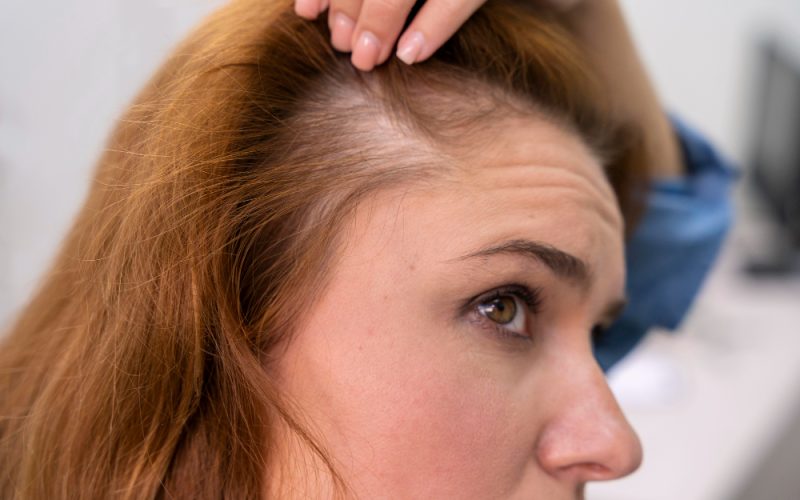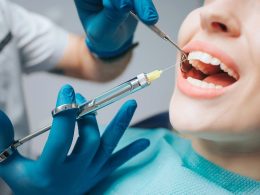Introduction
Scarring alopecia, also called cicatricial alopecia, is a group of rare disorders that destroy hair follicles and cause permanent hair loss. Unlike common hair loss that may grow back, scars replace follicles with fibrous tissue. This type of alopecia treatment can be challenging because early damage is often silent. Yet spotting symptoms quickly and choosing the right care can slow or stop the process. In this article, we’ll explain what scarring alopecia is, explore its causes and key signs, and review treatment options and self-care tips to help protect your hair and scalp.
What is Scarring Alopecia?
Scarring alopecia, or cicatricial alopecia, refers to a group of hair loss conditions where hair follicles are destroyed and replaced by scar tissue. Unlike other types of hair loss, scarring alopecia leads to permanent hair loss because the follicles can no longer regenerate. It can be caused by inflammation or damage to the scalp, resulting in patches of baldness that may not grow back. If you’re noticing bald patches or thinning hair, understanding scarring alopecia can help you better manage the condition. In this blog, we’ll explore its causes, symptoms, and treatment options.
What Causes Scarring Alopecia?
Scarring alopecia doesn’t have a single cause. Instead, several factors can contribute to the condition. One of the most common causes is an autoimmune response, where the immune system mistakenly attacks hair follicles. This inflammation leads to the destruction of the follicles and replaces them with scar tissue. Infections, injuries, or burns on the scalp can also cause scarring, as can some skin diseases such as lupus or lichen planus.
In some cases, genetic factors play a role. If there’s a family history of autoimmune conditions, you might be more likely to develop scarring alopecia. Each of these causes leads to a similar outcome: irreversible damage to the hair follicles, which prevents future hair growth.
Identifying the Symptoms of Scarring Alopecia
Recognizing the symptoms early is important for managing scarring alopecia. The most common signs are hair loss in patches, often with smooth, shiny, or scarred skin in the affected areas. The skin around these patches may appear red or inflamed, as the body’s immune system attacks the follicles. You might also experience itching or burning sensations in the affected areas, which is a result of inflammation.
As the condition progresses, it can lead to a complete loss of hair in the affected areas. In some cases, you may also notice changes in the texture of your scalp. If you see any of these symptoms, it’s best to see a dermatologist for a proper diagnosis.
Types of Scarring Alopecia
Scarring alopecia can be classified into two main types: primary and secondary. Primary scarring alopecia is when the hair follicles are directly attacked by inflammatory conditions, leading to permanent damage. Some well-known examples of primary scarring alopecia include:
- Lichen Planopilaris: A condition that leads to hair follicle destruction and scarring.
- Frontal Fibrosing Alopecia: This type often causes a receding hairline and is more common in women, especially after menopause.
Secondary scarring alopecia occurs when external factors such as burns, infections, or physical trauma to the scalp lead to scarring and hair loss. While the hair follicles are damaged in both cases, the cause differs.
How Is Scarring Alopecia Diagnosed?
Diagnosing scarring alopecia typically involves a thorough examination by a dermatologist. The doctor will begin by visually inspecting your scalp to identify areas of hair loss and inflammation. To confirm the diagnosis, a scalp biopsy may be performed. This involves taking a small sample of the scalp tissue to examine the extent of follicle damage.
Blood tests may also be ordered to rule out other conditions, like autoimmune diseases, which could be contributing to hair loss. With a clear diagnosis, your doctor can recommend the best course of treatment.
Treatment Options for Scarring Alopecia
Though scarring alopecia results in permanent hair loss, there are treatments that can help manage the condition and prevent it from worsening. These treatments focus on reducing inflammation, slowing hair loss, and protecting existing hair follicles.
Topical steroids are commonly prescribed to reduce inflammation and irritation on the scalp. In some cases, oral medications such as corticosteroids or immunosuppressants are used to control inflammation and prevent further follicle damage.
For those who have advanced scarring alopecia, hair restoration options such as hair transplants may be considered. This is only an option if some hair follicles are still viable and capable of supporting new hair growth.
In addition to these treatments, lifestyle changes can help manage the condition. Using gentle hair care products, avoiding tight hairstyles, and protecting your scalp from sun damage are all steps that can help reduce irritation and protect your scalp.
Managing Scarring Alopecia: Prevention and Care
While you can’t entirely prevent scarring alopecia, there are several steps you can take to manage it effectively and protect your hair follicles. Seeking early intervention is key. The sooner you begin treatment, the better the chances of controlling the inflammation and preventing further damage.
Regular visits to a dermatologist are essential to monitor the progression of the condition. Depending on how your scalp is responding to treatment, your doctor may adjust your care plan. Additionally, using mild, non-irritating shampoos and conditioners can help reduce scalp inflammation and prevent further irritation.
Although the condition is challenging, with proper care and treatment, it is possible to slow its progression and preserve the remaining hair follicles.
Conclusion
Scarring alopecia may result in permanent hair loss, but with the right treatments and a proactive approach, you can manage the condition and protect your remaining hair. Early detection plays a crucial role in slowing down its progression, and partnering with a dermatologist ensures that you receive personalized care tailored to your unique needs.
While there’s no cure for scarring alopecia, advancements in treatment options have made it possible to control inflammation and prevent further damage. Medications, hair restoration treatments, and lifestyle adjustments can help manage the condition and improve your quality of life. Participating in Alopecia Areata Clinical Trials is also a great option for those seeking to explore new therapies and contribute to research that could benefit others dealing with similar conditions.
Remember, the sooner you take action, the better your chances of slowing the progression of scarring alopecia. Don’t wait—consult a dermatologist today to take the next steps in your journey toward managing this condition and protecting your scalp.












